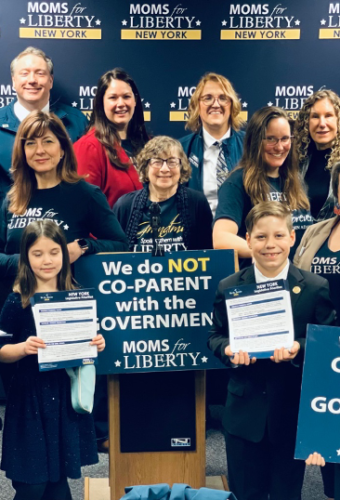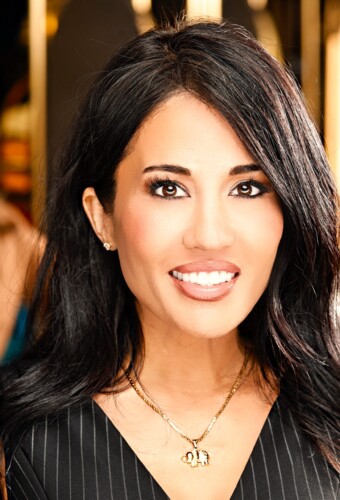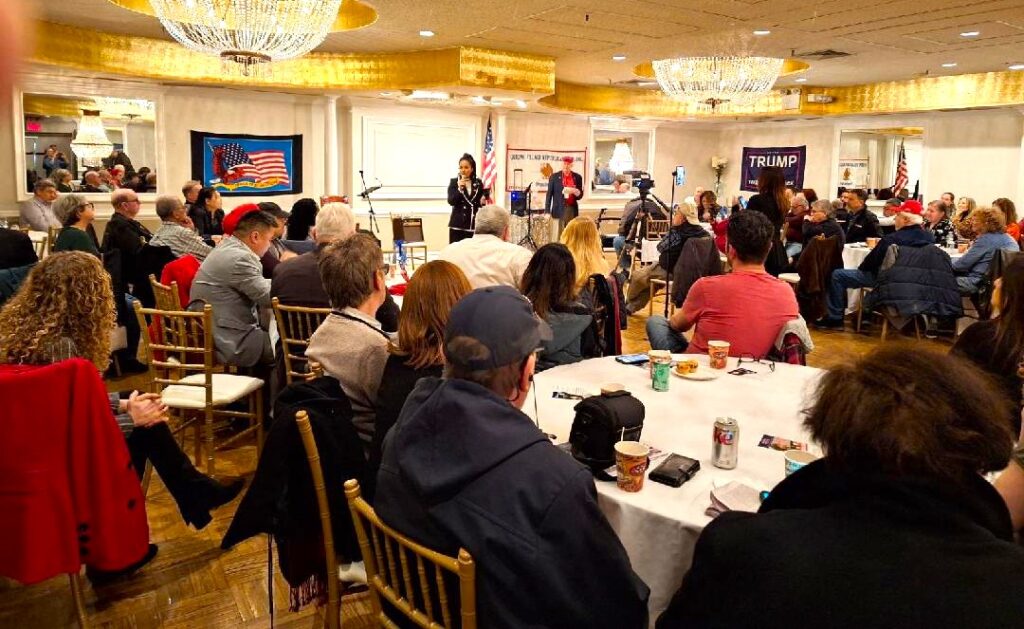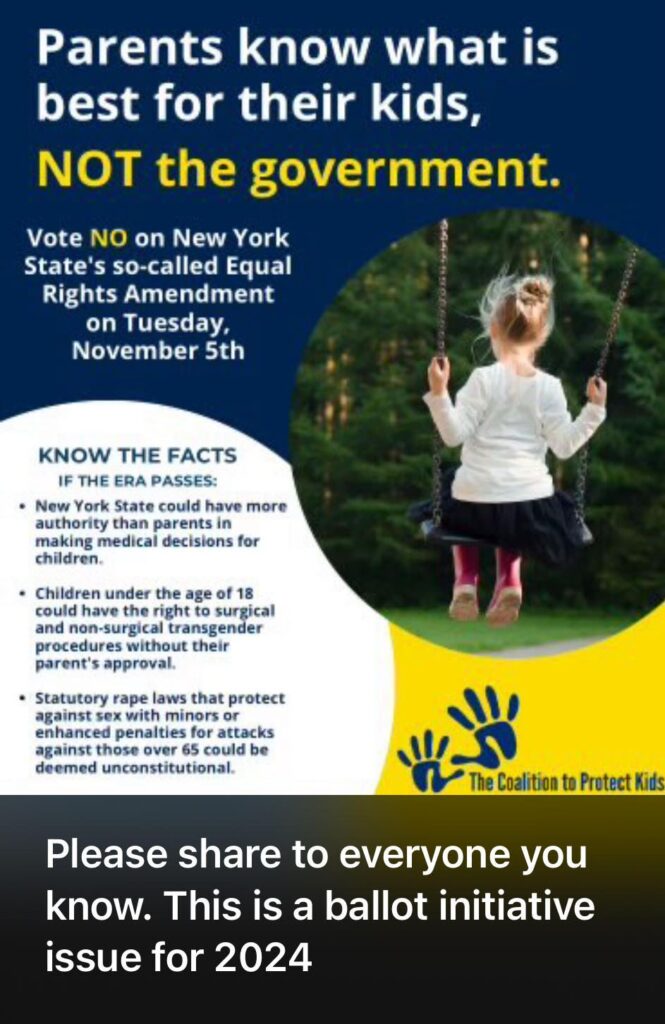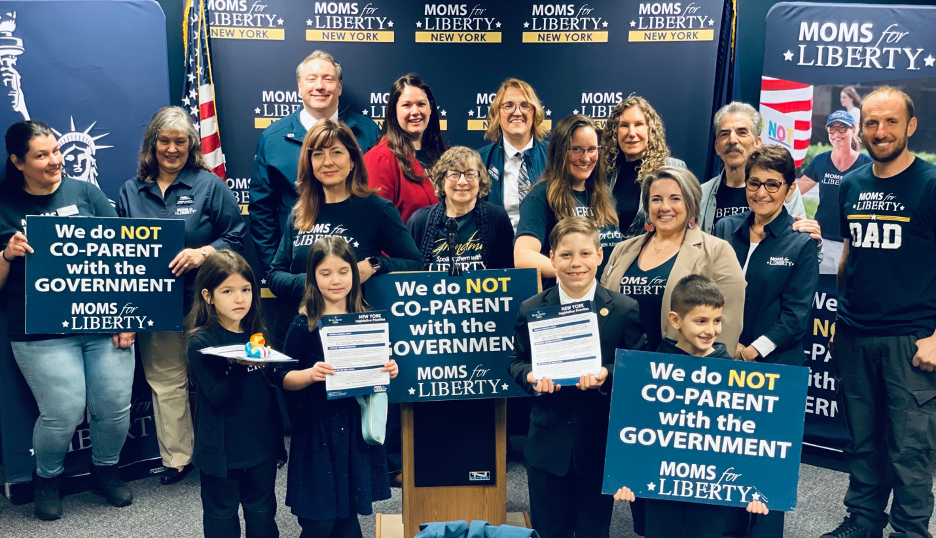
By Dr. Laura Schmitt Schwartzberg, QVRC 3rd Vice President

February 5th was Lobby Day at our State Capital in Albany. Elena Chin, Queens County Chapter Chair of Mom’s for Liberty (M4L), fellow QVRC Board Member James Coppola, and I joined M4L members from across our state to voice concerns about consequential imminent legislation, not mentioned in the mainstream media. Our group assembled a table in the main corridor to lobby all those passing through. Elena, James, and I headed to each legislator’s office, hitting every floor. Note to self- wear sneakers next year!
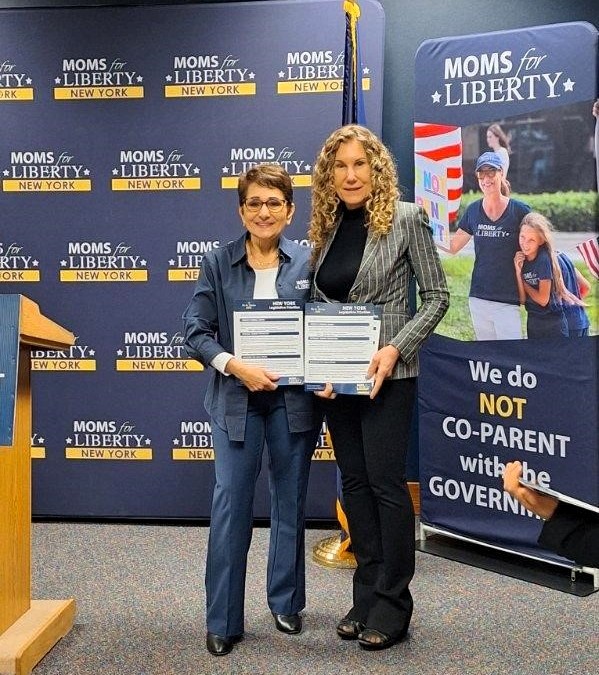
The first set of bills deals with the hijacking of parental rights. Bills A00276B, S00762A and A06761 give children of any age the right to consent to medical treatment and care without parental consent or knowledge. Some versions mention homeless or runaway, but don’t define terms. Any angry child who doesn’t like hearing “no” can slam the door behind them and claim to be a runaway. Homeless doesn’t mean orphan. Existing legislation already allows for the treatment of children in emergencies, by licensed physicians without parental consent. Noteworthy, throughout the new legislation “licensed physician” is replaced by PA’s and numerous ancillary healthcare workers with less rigorous educational certification and training. While simultaneously omitting a child’s most fervent protector, the parent, it allows the clueless minor to make life altering decisions in consultation with someone who didn’t even go to medical school! This substitution and license creep wasn’t made to protect children. It’s there to increase the number and types of people who can override a parent’s will.
Curiously, the word “care” was newly inserted adjacent to every existing word “treatment.” It isn’t there to make you feel warm and cozy. Treatment is to cure, heal, make better. Medically speaking, “care” has an opposite intention. Canada’s assisted suicide laws are medical care. They are not intended to make you better; they are intended to make you dead. When assisted suicide laws pass here, this law will be situated to allow non-terminally ill children, possibly suffering depression, to end their lives. Meanwhile, “care” gives legal cover for gender transitioning interventions and procedures not meant to heal. Medical research does not confirm that transitioning a child is healthy for them. Technically, it is not a treatment. These are healthy children. This is “care.”
A parent’s right to know is also blocked! What about adverse reactions, drug interactions, duplication of medications? Shouldn’t parents have input to provide family histories and comorbidities absent from electronic medical records?
We opposed A04576 and S01532, transgender policy allowing biological males to compete with girls in competitive sports. Title 9 invested separately in women’s sports, acknowledging biology. It didn’t promote co-ed sports to achieve equality. Feelings have no effect on the chromosomal programing of every cell since conception, which gives one sex a competitive physical advantage over another. Additionally, girls should have the right to privacy and safety in bathrooms and locker rooms. We groom girls to become victims when we teach them to ignore their gut feelings and be ashamed when they feel unsafe.
We achieved bipartisan support for bills A00423 and S01037 protecting children from data mining.
Some questioned our opposition to the proposed state ERA bill. “What is a woman?” I asked. If you can’t define a woman as a biological female, ERA becomes an oxymoron. A feminist would be a moron to approve. It strips women of rights, bestowing them upon biological males. Attempting to protect elderly, this ERA encompasses “all ages.” Tell your child to go to bed and get the retort, “No, I have rights!” Does this reiterate a child’s right to medical treatment and “care?”
I’m not surprised that many of these bills are poorly written or loosely read. When we got to the 6th floor, the back offices all reeked of pot! My parenting impulses exploded. I opened their doors as I knocked, scolding them like I would any stupid teenager caught doing the same! “You have one day a year to meet here with constituents and you have the audacity to disrespect us like this! Can’t you refrain one day and pretend you are doing the job we’re paying you to do! You should be ashamed of yourselves!”
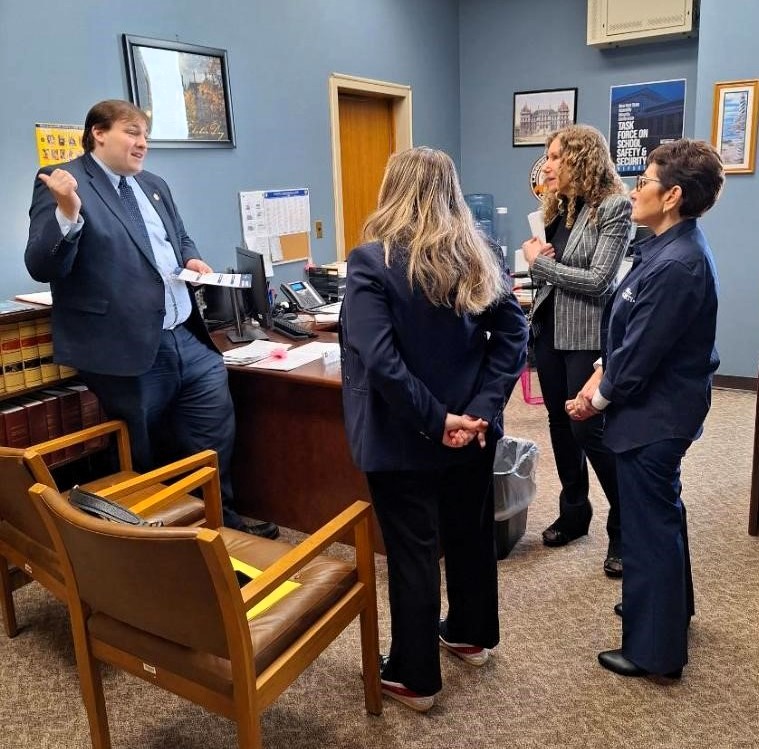
Our day brightened as we spoke with some stellar common-sense representatives. The standouts among these are Lester Chang AD49 Brooklyn, Doug Smith AD5 Suffolk County, and Anil Beephan AD105 Duchess County. These three are astute, steadfast, and brave. They understand what is at stake. Preserving parental rights is key to protecting children. Unfortunately, they are the minority. They stressed the importance of flipping 2 to 3 seats. They need help and we need more like them!

